With the development of new era technologies, customer expectations for vehicles are higher than ever, and more people are focusing on in-car interfaces. Most drivers hope that vehicles can make their lives easier and support smartphone apps.
The HMI (Human-Machine Interface) solutions for automobiles are the functions and components of automotive hardware and software that enable drivers and passengers to interact with the vehicle and the external environment. Automotive HMI solutions improve the driving experience by interacting with multi-touch dashboards, voice-enabled in-car infotainment, control panels, built-in screens, and other features.
They transform the vehicle into an ecosystem composed of interconnected components that work together to make driving more personalized, adaptive, convenient, safe, and enjoyable. HMI systems compliant with FuSa (ISO 26262) standards, powered by embedded sensors and intelligent systems, allow vehicles to respond to the driver’s intentions and preferences. According to a report by a joint market research company, the global automotive human-machine interface market is expected to reach $33.59 billion by 2025, with a growth rate of 9.90%.
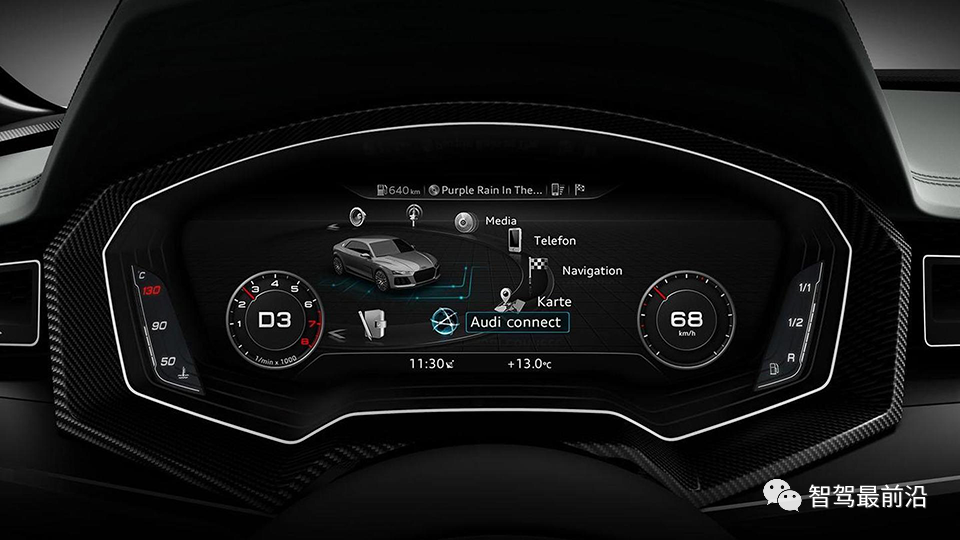
Let’s take a look at some applications of HMI in the automotive industry and how it enhances the experience for drivers and passengers.
Digital Instrument Cluster
The instrument cluster is a panel located behind the steering wheel that houses various gauges and indicators to help the driver track the vehicle’s status. The full electronic functionality of modern automotive cockpits can be accessed through the digital instrument cluster. With the help of the digital cluster, vehicle driving information such as speed, fuel or battery level, trip distance calculator, and route planning graphics can be combined with comfort information like external temperature, clock, and vent control.
Additionally, these digital dashboards are connected to the vehicle’s entertainment system, allowing control of multimedia, browsing the phonebook, making calls, and selecting navigation destinations. For example, the tachometer can display the engine’s RPM.
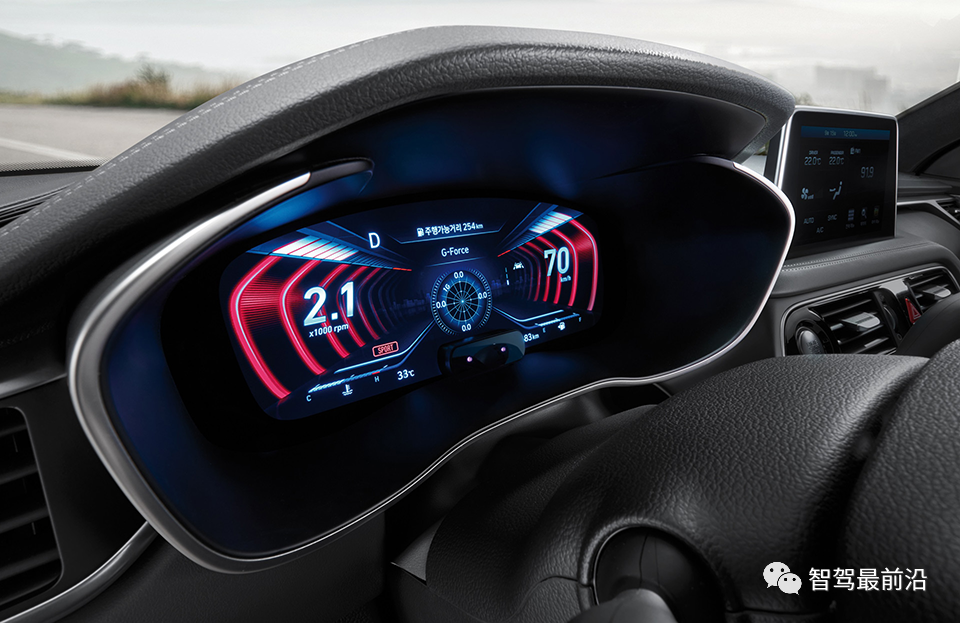
Head-Up Display (HUD)
The HUD is a transparent display mounted on the car’s dashboard that shows important information and data without distracting the driver.
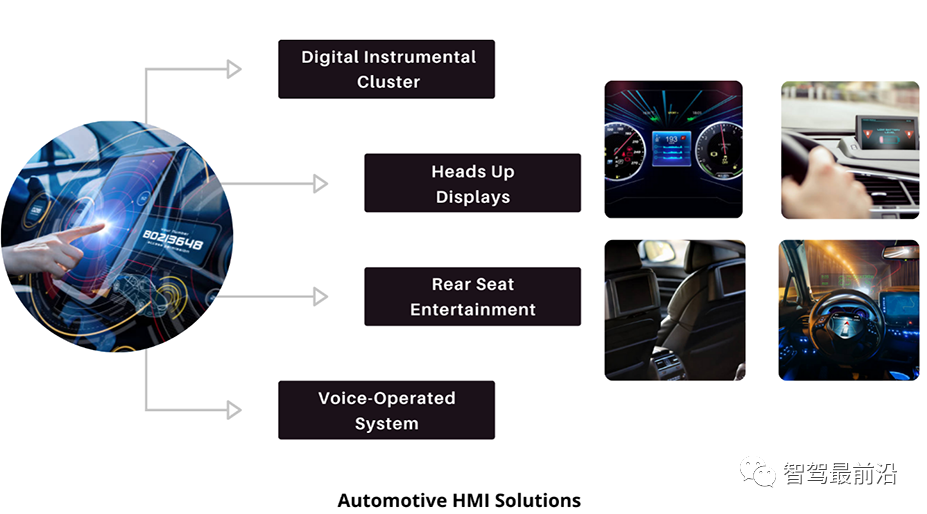
Rear Seat Entertainment (RSE)
Rear Seat Entertainment (RSE) is a rapidly developing automotive entertainment system that heavily relies on graphics, video, and audio processing. Television, DVD, internet, digital broadcasting, and other multimedia content sources are integrated into the RSE system. The system is equipped with wireless internet connectivity, allowing rear-seat passengers to browse the web, manage their playlists, interact with their social media platforms, and access more services.
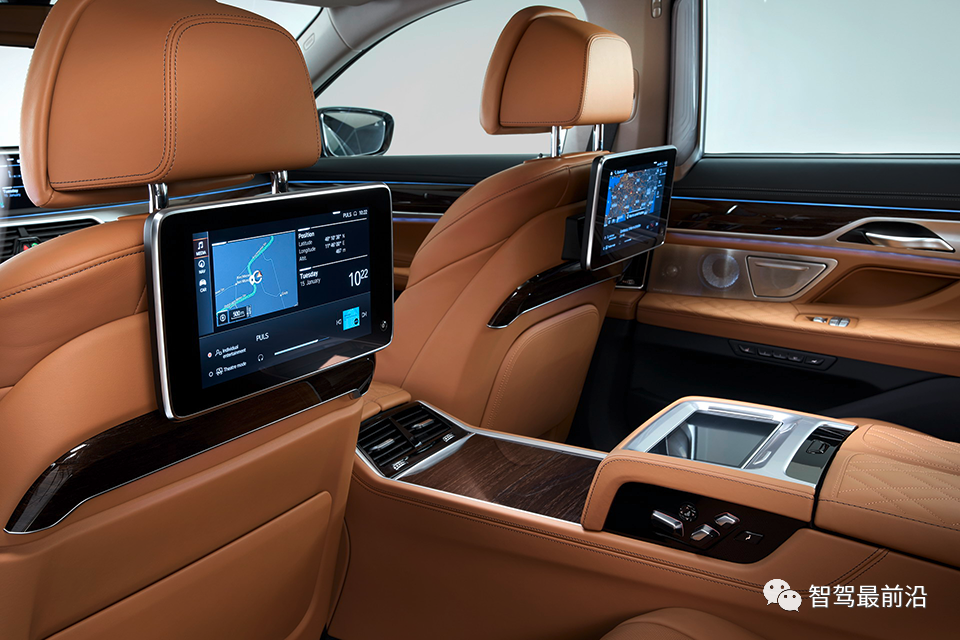
Voice Operating System
Modern voice-activated systems can communicate with the vehicle in a very natural manner. They can even understand accents and request more information when necessary. This is thanks to the combination of artificial intelligence and machine learning, as well as advancements in natural language processing and cognitive computing. For example, the Apple CarPlay application allows users to navigate, send and receive messages, make calls, play music, and listen to podcasts or audiobooks. All of this is controlled by voice commands to ensure a safe environment and allow the driver to focus on the road.
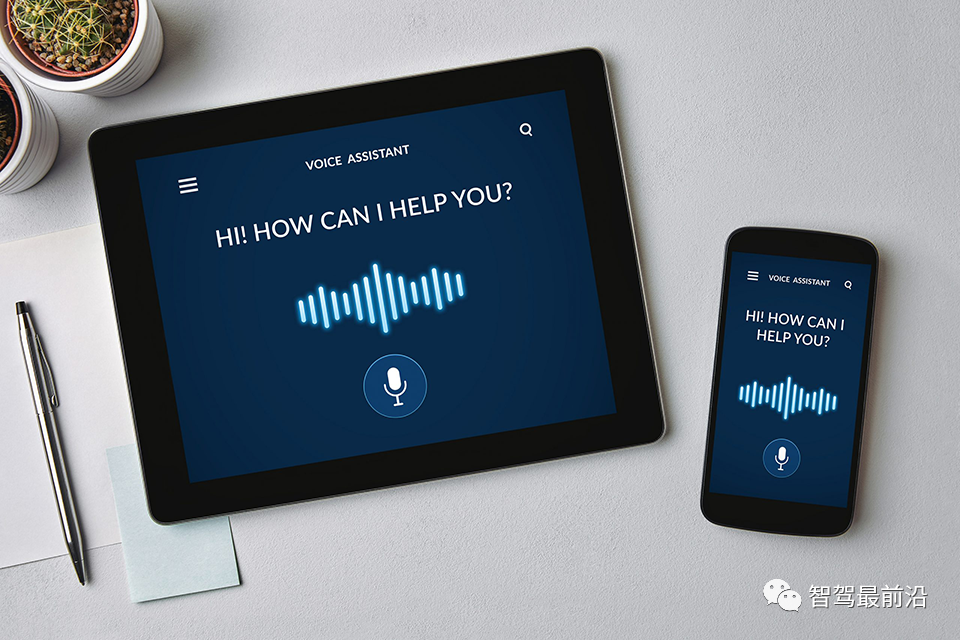
Haptic Technology
Haptic technology, also known as 3D touch, provides tactile feedback to users through the application of force, vibration, or motion. When consumers need to touch a screen or operate certain functions, haptic technology can be utilized. In its most basic form, a haptic system consists of a sensor (such as a touchpad button) that sends input stimulus signals to a microprocessor. The microprocessor generates appropriate output, which is amplified and transmitted to an actuator, producing the vibrations needed by the system.
Vehicles are also becoming increasingly adept at recognizing their surroundings and responding appropriately by issuing safety warnings and alerts. Information can be easily conveyed to the driver through vibration alerts rather than lights or sounds. For example, when a lane change is detected without warning, the steering wheel may vibrate to alert the driver. If they are moving lanes too slowly, the seat can also vibrate to remind the driver.
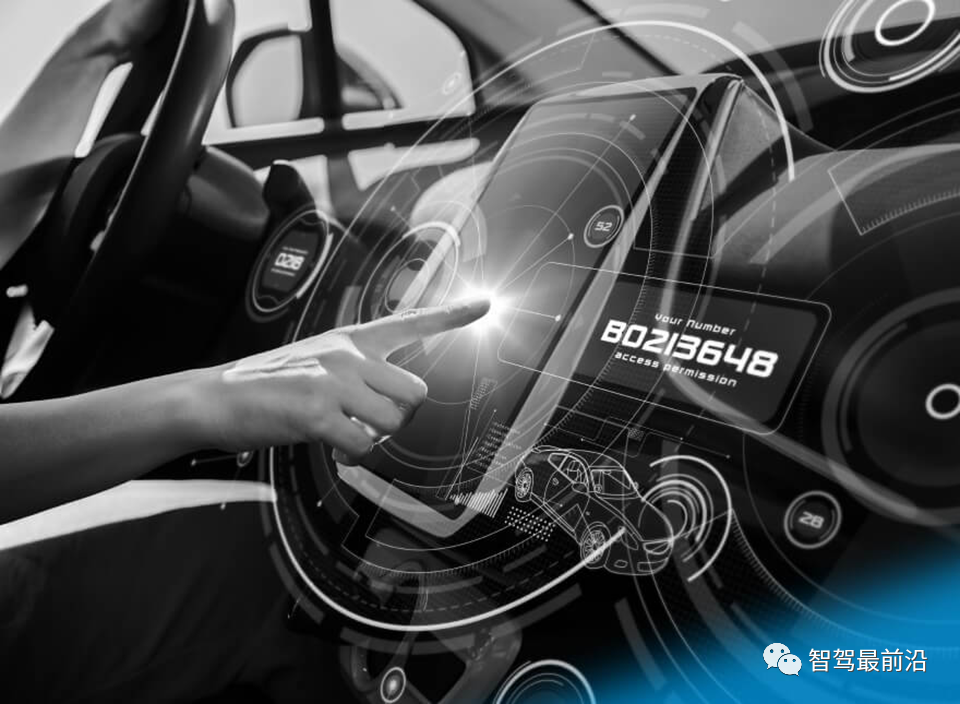
Similar to General Motors’ Chevrolet brand in 2015, they introduced safety alert seats. The vehicle can communicate collision risks and lane departures to the driver through tactile input on the seat. It is one of the first vehicles to use haptics to communicate with the driver.
In-Car Internet Payment
The concept of connected commerce is becoming increasingly popular and creating opportunities for brands and original equipment manufacturers. In this case, users will receive an electronic wallet with biometric verification capabilities, allowing them to pay for almost any expense anywhere, including tolls, coffee, and other bills and creditors. While in-car payments may not currently be a significant advantage, in the future, this human-machine interaction service may encompass more than just parking and takeout.
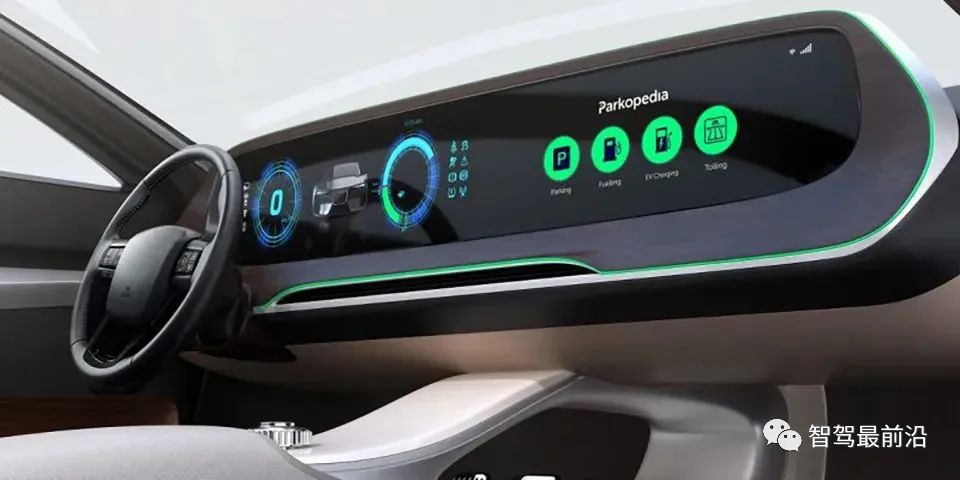
Driver Monitoring System
The driver monitoring system is a complex safety system that uses a camera located on the dashboard to detect driver fatigue or distraction and issues warnings or alerts to refocus the driver’s attention on the road. If the system detects that the driver is distracted or drowsy, it may emit an auditory alert and provide a visual signal on the dashboard to attract the driver’s attention. If the driver’s internal sensors indicate that he or she is distracted, and the vehicle’s external sensors indicate an impending collision, the system can automatically brake, integrating inputs from both internal and external sensors.
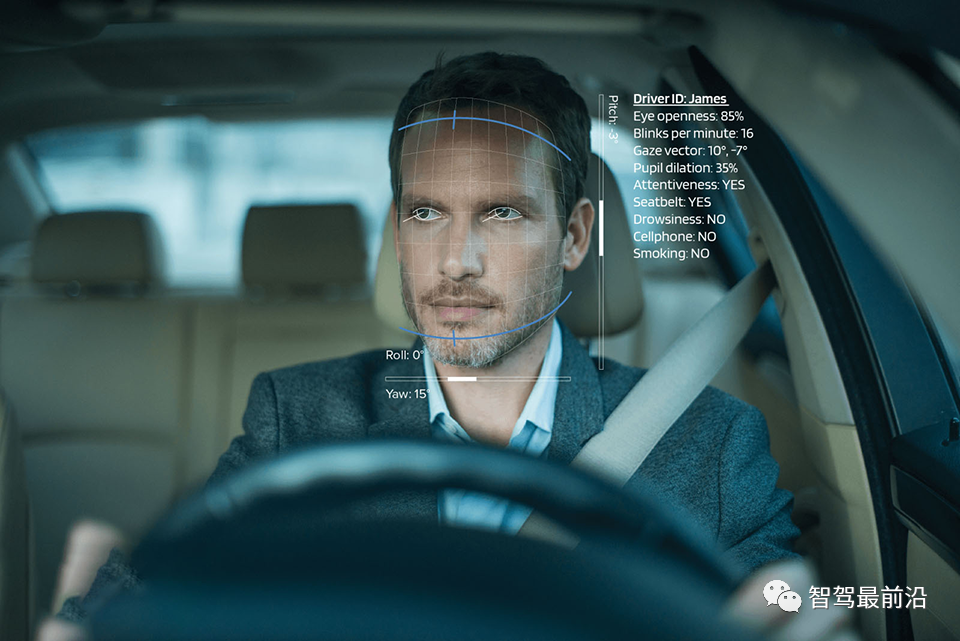
As we move towards smarter, connected, and autonomous driving, the interface between cars and humans has evolved. Today’s human-machine interface solutions not only enhance comfort and convenience within the vehicle but also provide personalized experiences. These intelligent HMI solutions convey critical information that requires the driver’s attention, reduce distractions, and improve vehicle safety. HMI makes information processing and monitoring simple, intuitive, and reliable.
Welcome to all angel round and A round companies in the automotive industry chain,including top-tier institutions among 500 automotive investment institutions;some quality projects will be selected for thematic roadshows to existing institutions;there are communication groups for sci-tech innovation company leaders,and dozens of groups related to automotive manufacturing, automotive semiconductors, key components, new energy vehicles, intelligent connected vehicles, aftermarket, automotive investment, autonomous driving, vehicle networking, etc. Please scan the administrator’s WeChat to join the group (please indicate your company name)